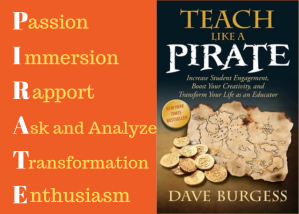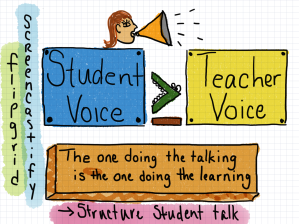It is a time like no other. It is a time that we are separated, but never more connected. In this time, I have had 3 songs continuously running through my head:
You Say by Lauren Daigle;
Joy by For King and Country; and
Fear is a Liar by Zach Williams
While all three of these songs speak to my soul as a child of God – the words in each of them are powerful and are relevant to what so many educators and students are experiencing right now. You Say by Lauren Daigle is about relationship – the importance of having others believe in us so that we may believe in ourselves.
The Importance of Relationships in this New Normal
“Relationship” has always been important in education – it is the 4th “R” of the old “Reading, Writing, and aRithmetic.” Relationships put the humanity back into education. Manny Scott always speaks of the importance of educators having a sense of “openness.” It is being “open” that allows us to show empathy – to better understand others who we serve. It is the old “SEL” of the classroom – as many of us know this new label of Social Emotional Learning is the “old” educate the whole child…because ALL learning is Social and Emotional!
In this new normal, relationships, and finding ways to connect with others, are even more important. I have heard the stress in the voice of educators trying to figure out how to “do” distance learning – they feel that “they are not enough” and that “they will never measure up.”
I keep fighting voices in my mind that say I’m not enough
Every single lie that tells me I will never measure up
Am I more than just the sum of every high and every low?
Remind me once again just who I am, because I need to know
Questions like: How do I “teach” online? How do I make sure students “do” what I assign? How do I know students are “getting” what I am teaching? How do I address issues like internet, access to tech, access to food, etc? How do I “grade”?
For many this new normal seems “more” normal. They have made the transition to distance learning easier than others…or so it appears. We don’t really know unless we reach out and ask.
Students also have many questions during this time: Are my teachers OK? Are my friends OK? Is my family far away OK? Will I have to repeat this school year? Will I graduate?
Back to relationships – reaching out – connecting and the POWER of someone else believing in YOU. Manny Scott, Luis Cruz, Jimmy Casas, Eric Sheninger, George Couros, Sarah Johnson, Tara Martin, Jessica Johnson, Nilli Bailey, Shelley Burgess, Beth Houf – just a few educators I have “read” recently. They all come back to the notion – our belief in another person eventually helps them see that they can believe in themselves. Our belief in another person can give that person HOPE!
We need to reach out to each other; we need help each other believe.
Grading v. Feedback
These relationships with students feed right into the question about “grading.” If there was ever a time to set aside traditional grading practices, it is now. When students have a relationship with you that involves your belief in them, feedback will push their learning growth more than a traditional “grade” ever will.
Feedback moves learning forward where a “grade” can sometimes stop learning in its tracks. Feedback can let a student know you believe in them, that you care about them, AND that you have high expectations for them. Feedback that “leads with love” uses language that acknowledges strengths and builds up weaknesses. This type of feedback moves students towards the expectations you have – and also infers that learning doesn’t necessarily have an end point.
Here are some sentence starters for giving feedback that provides hope:
I appreciate how you’re writing…. for example…; What if…; How did you discover…? Did you consider…? This section….I wonder if you…
And I believe (I), oh I believe (I)
What You say of me (I)
I believe
While we don’t want our students to be “dependent” upon what others think of them – it is the relationship and belief in them that can get them to independence. Being a servant of your students – making connections before worrying about content – giving grace before grades. These are important things to remember in our new normal.
In this new normal, my hope for each of you is that you know you are loved and you are enough!
#YouMatter

 How many of you remember reviewing and practicing your multiplication facts? Some of us may have been excited because we were crazy about math anyway; however, some of us didn’t always look forward to “drill and kill” of practicing and memorizing our facts.
How many of you remember reviewing and practicing your multiplication facts? Some of us may have been excited because we were crazy about math anyway; however, some of us didn’t always look forward to “drill and kill” of practicing and memorizing our facts.







